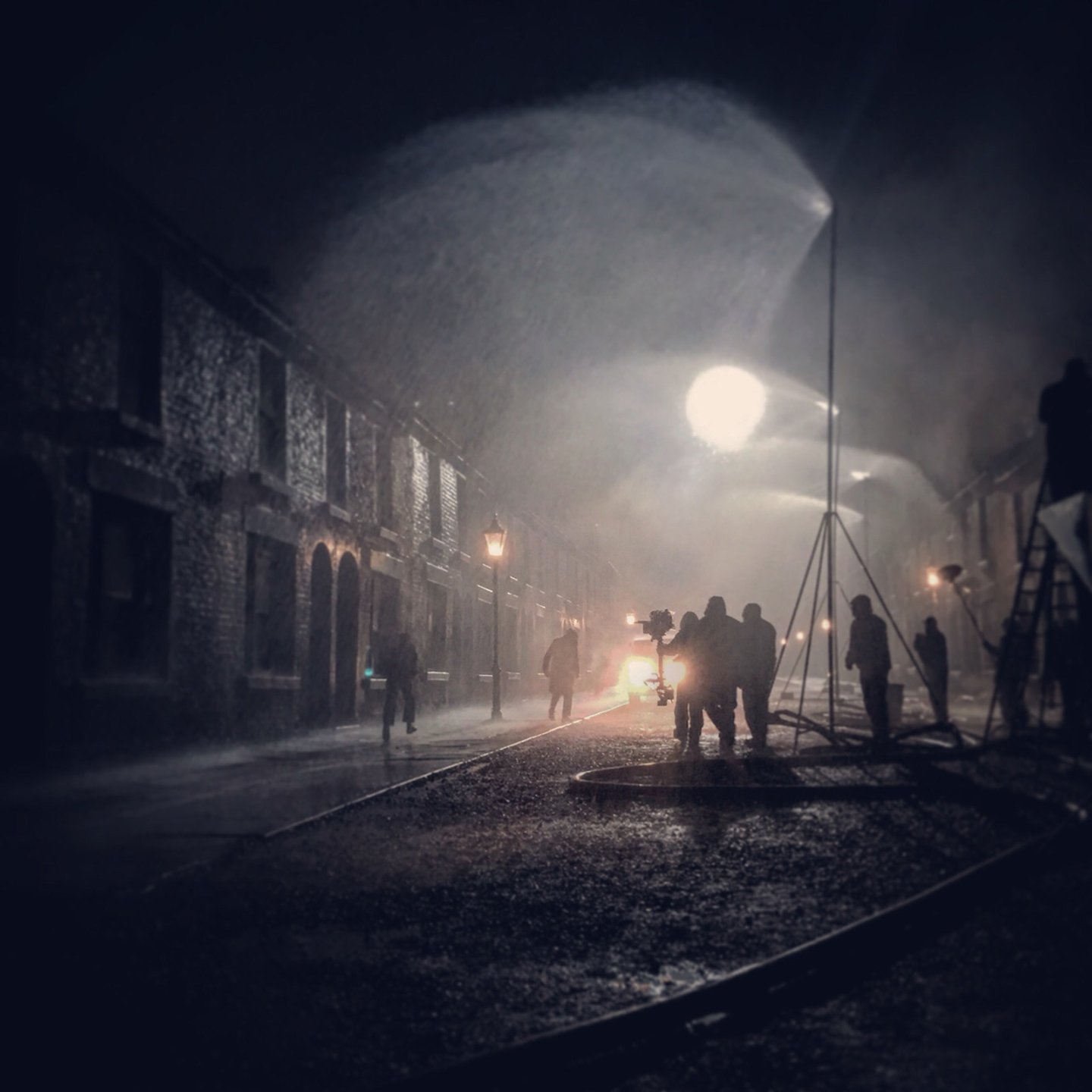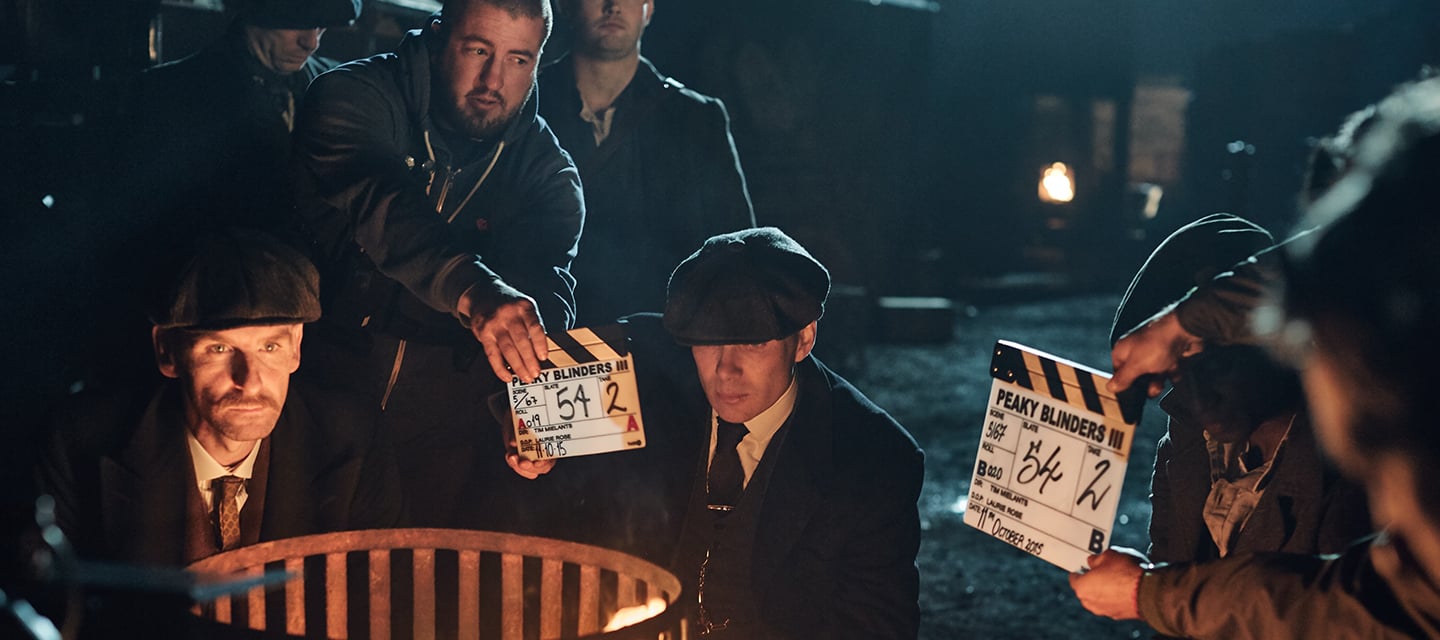
Peaky Blinders: Mean Streets
Cinematographers Laurie Rose, BSC and Cathal Watters, ISC discuss their stylish period work on the acclaimed television crime drama.
Unit photography by Robert Viglasky, courtesy of Caryn Mandabach Productions Ltd., Tiger Aspect Productions Ltd. and Netflix. Additional behind-the-scenes images courtesy of Laurie Rose, BSC and Cathal Watters, ISC.
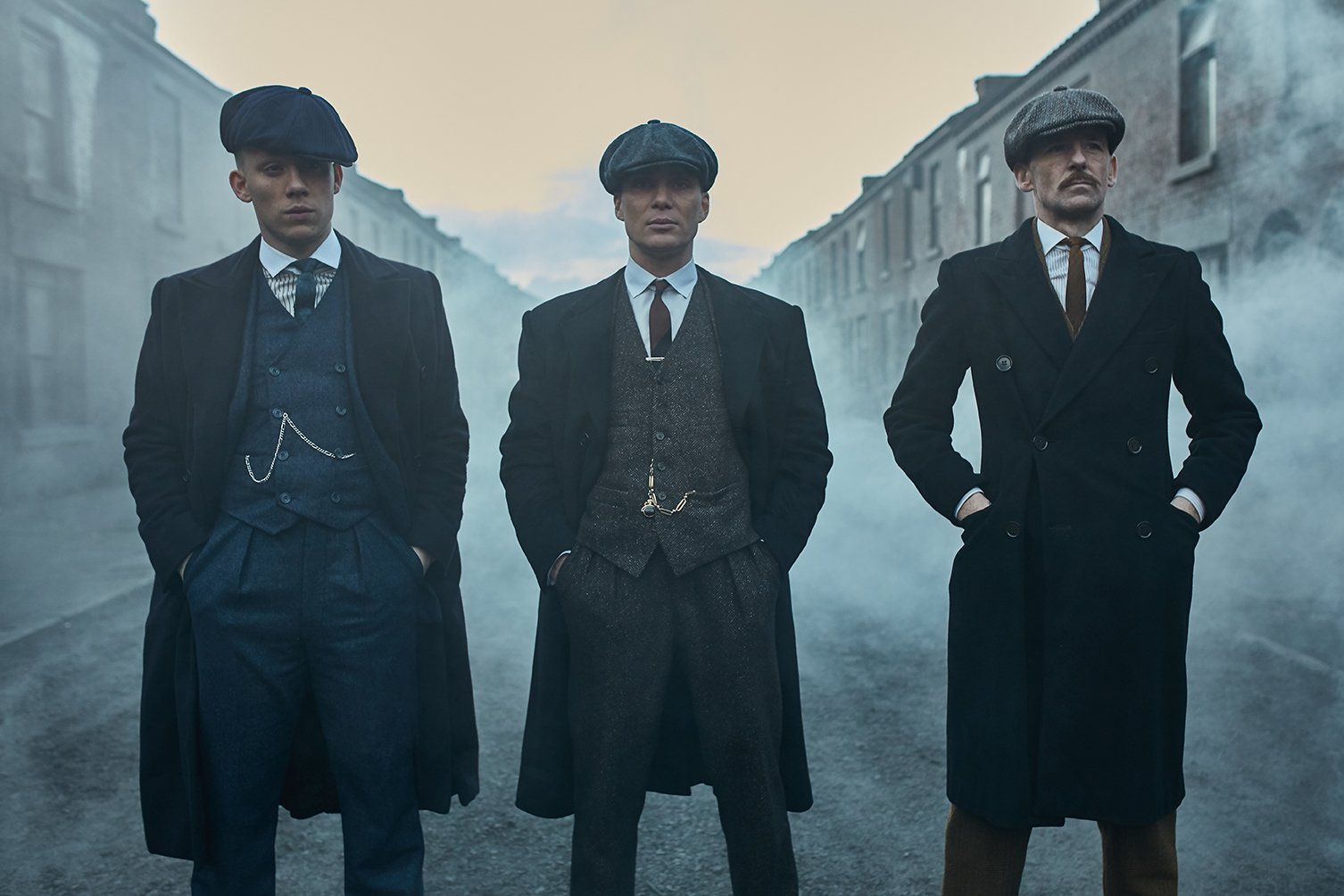
Created by Steven Knight — writer of the Oscar-nominated script for Dirty Pretty Things — Peaky Blinders follows members of a criminal gang family in Birmingham, England, immediately after the First World War. Featuring Cillian Murphy in the lead role of gangster Thomas “Tommy” Shelby, the production has enjoyed a stellar cast, including Tom Hardy, Helen McCrory, Adrien Brody and Sam Neill. Perhaps atypically for a period piece, the BBC/Netflix series uses modern music and depicts violence unflinchingly, all while maintaining a reputation for stylish visuals.
The success of Peaky Blinders is evident in both its accolades and its longevity. Season 1 earned BAFTA Television Craft Awards for director Otto Bathurst and cinematographer George Steel, as well as nominations for production design and visual effects — and the show’s fourth season is in production at the time of this writing.
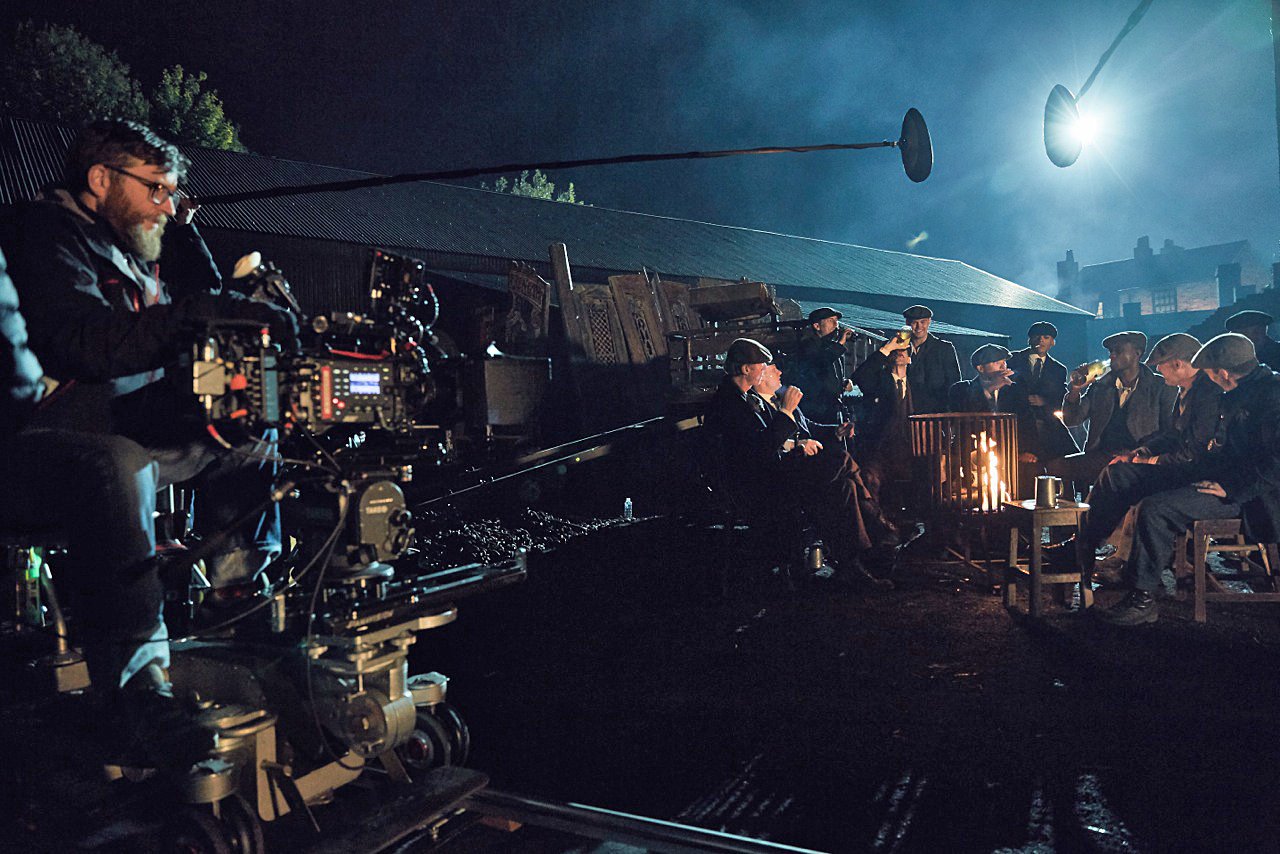
Early seasons were photographed by Steel, Simon Dennis, BSC and Peter Robertson, ISC — with Laurie Rose, BSC, on Season 3. Rose’s association with High-Rise director Ben Wheatley served as the cinematographer’s springboard into dramatic work (AC June ’16). “I was a freelance TV cameraman, then gradually got into shooting scripted work almost by accident,” Rose says. “That’s when I started working with Ben Wheatley, and we shot a completely independent film [2009’s Down Terrace] funded solely by Ben and his producer.” After 2013’s A Field in England, Rose began shooting drama full time. He became a member of the British Society of Cinematographers in November 2016.
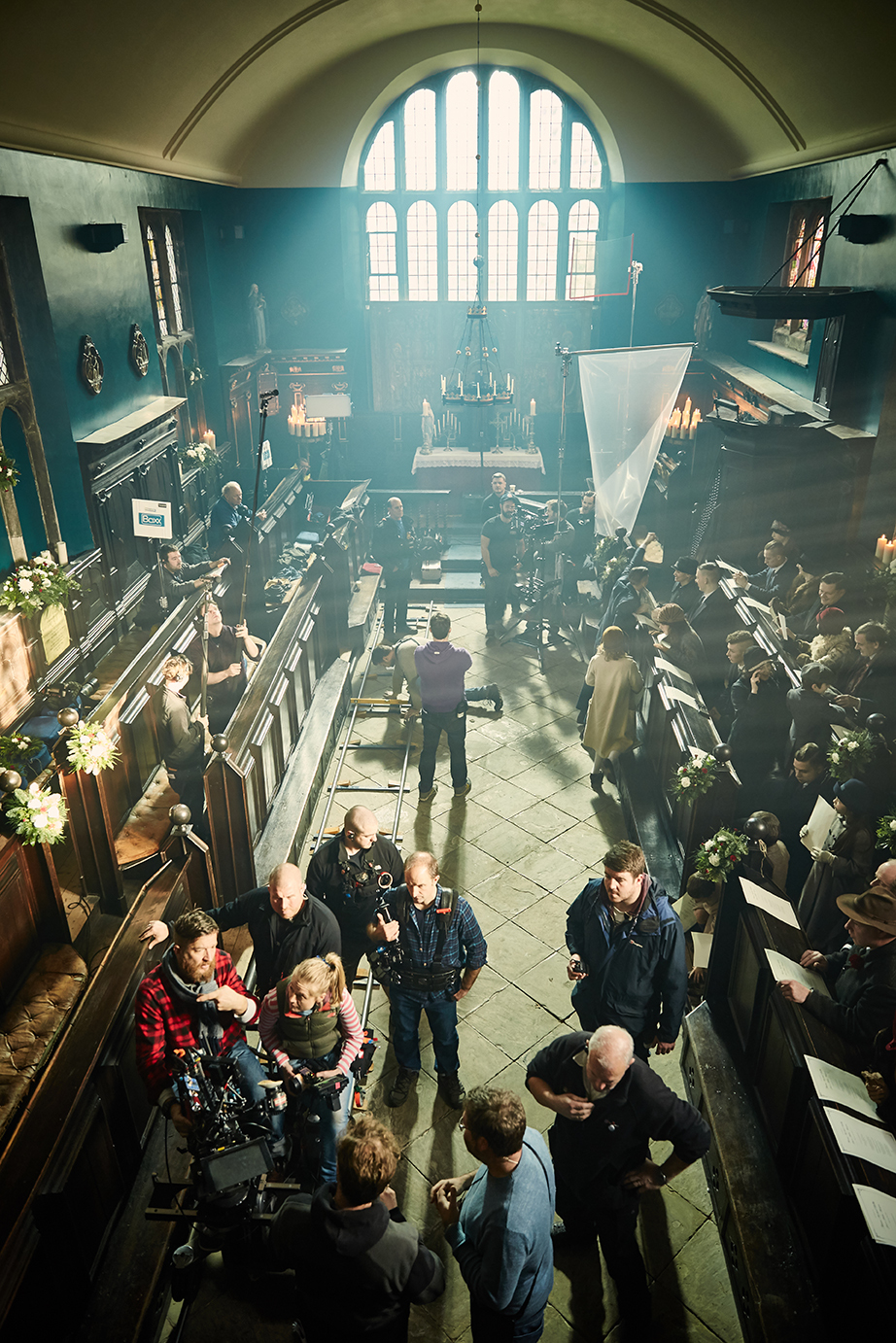
Rose first met Murphy on a Wheatley project, Free Fire, during 2015. “I knew [Peaky Blinders was] in prep, but we’d only talked about it in passing during the shoot,” Rose recalls. “It’s a hugely stylistic show, bold and strong, and everyone that I knew appreciated it for that.” The second vector of what Rose calls a “two-pronged attack” came via “a director I’d worked for, whose friend, Tim Mielants, was due to direct Season 3. Tim had seen some of my work on London Spy and wanted to meet. We were both new to the series, so we bonded [over] that.
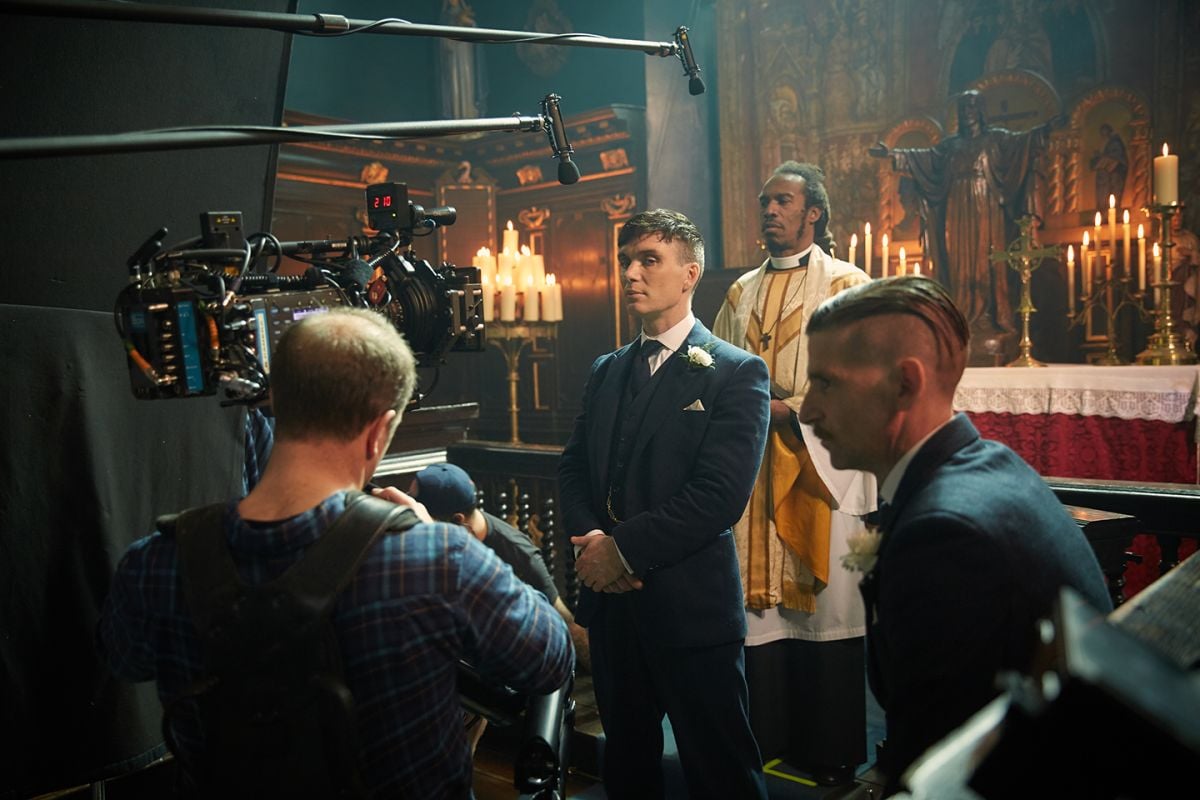
“The mandate given to Tim and I was evolution, not revolution,” the cinematographer says. “What George did in Season 1, and subsequently what Simon did in 2, were both very strong voices in their own way, that incorporated music-video stylistics with slick period drama for a very noir, smoky and backlit look.” And because that look had become a signature element of the production, there could be no better reference for Season 3 than the existing episodes. “I went into a job with 12 hours of the best reference you can imagine,” he recalls.
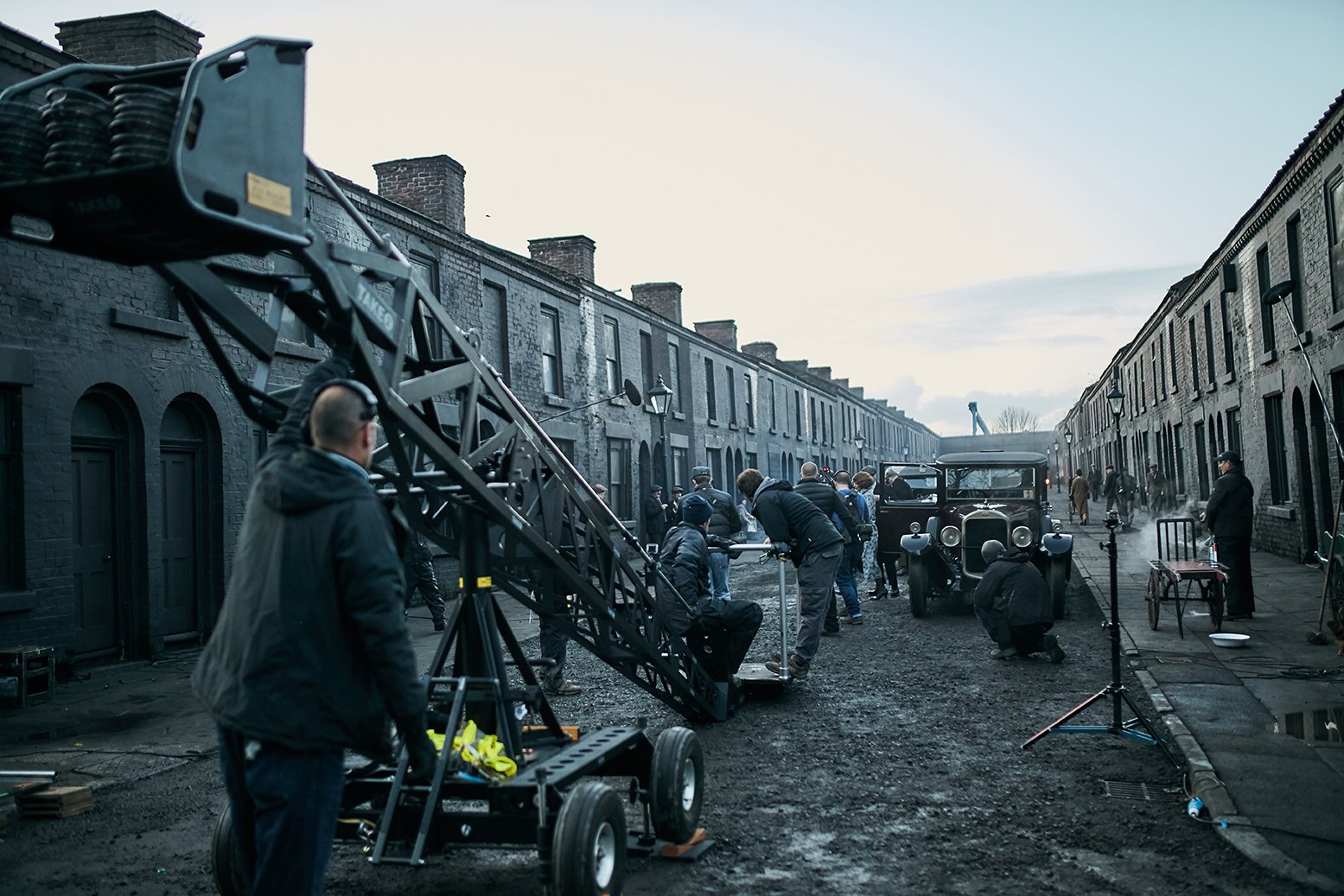
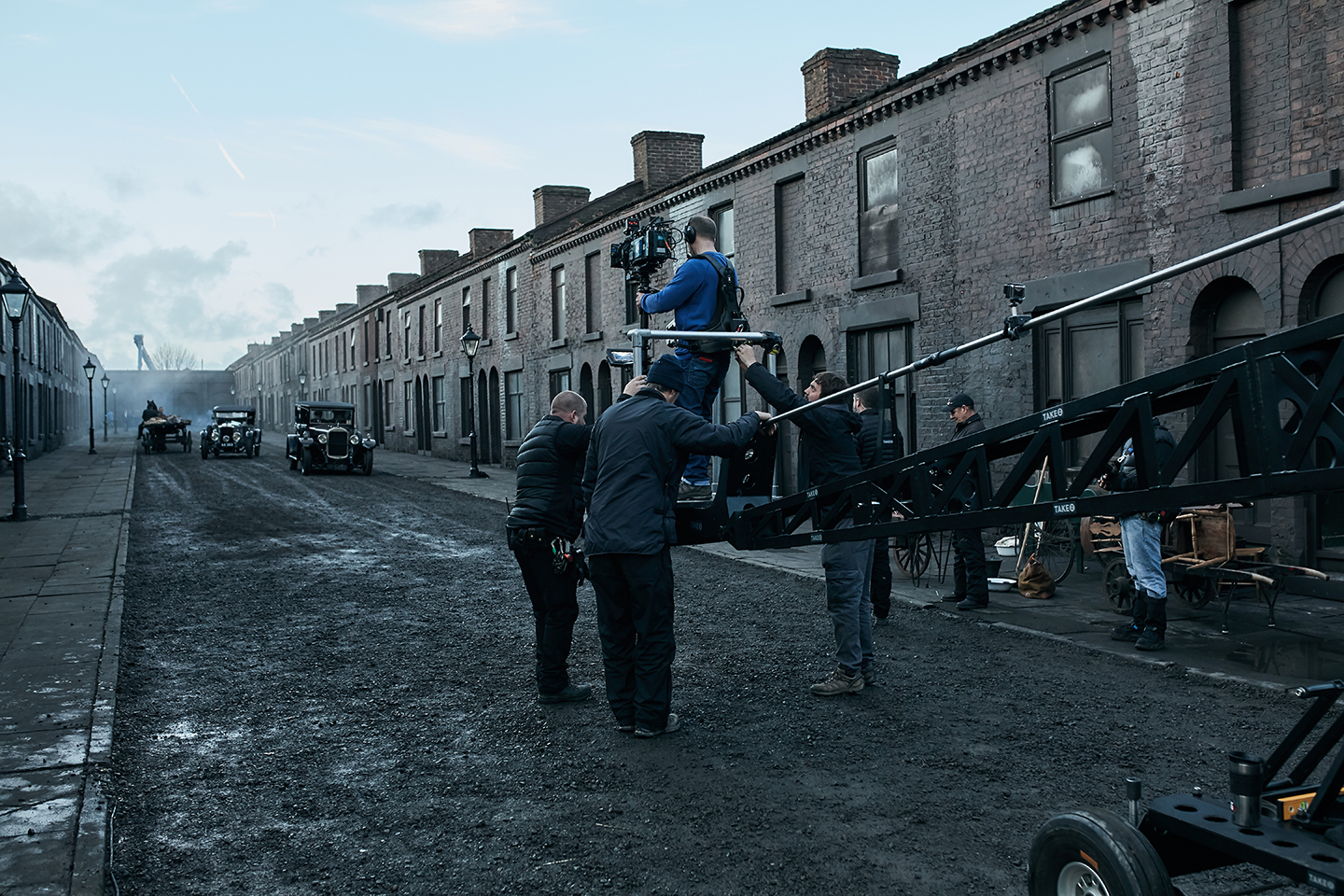
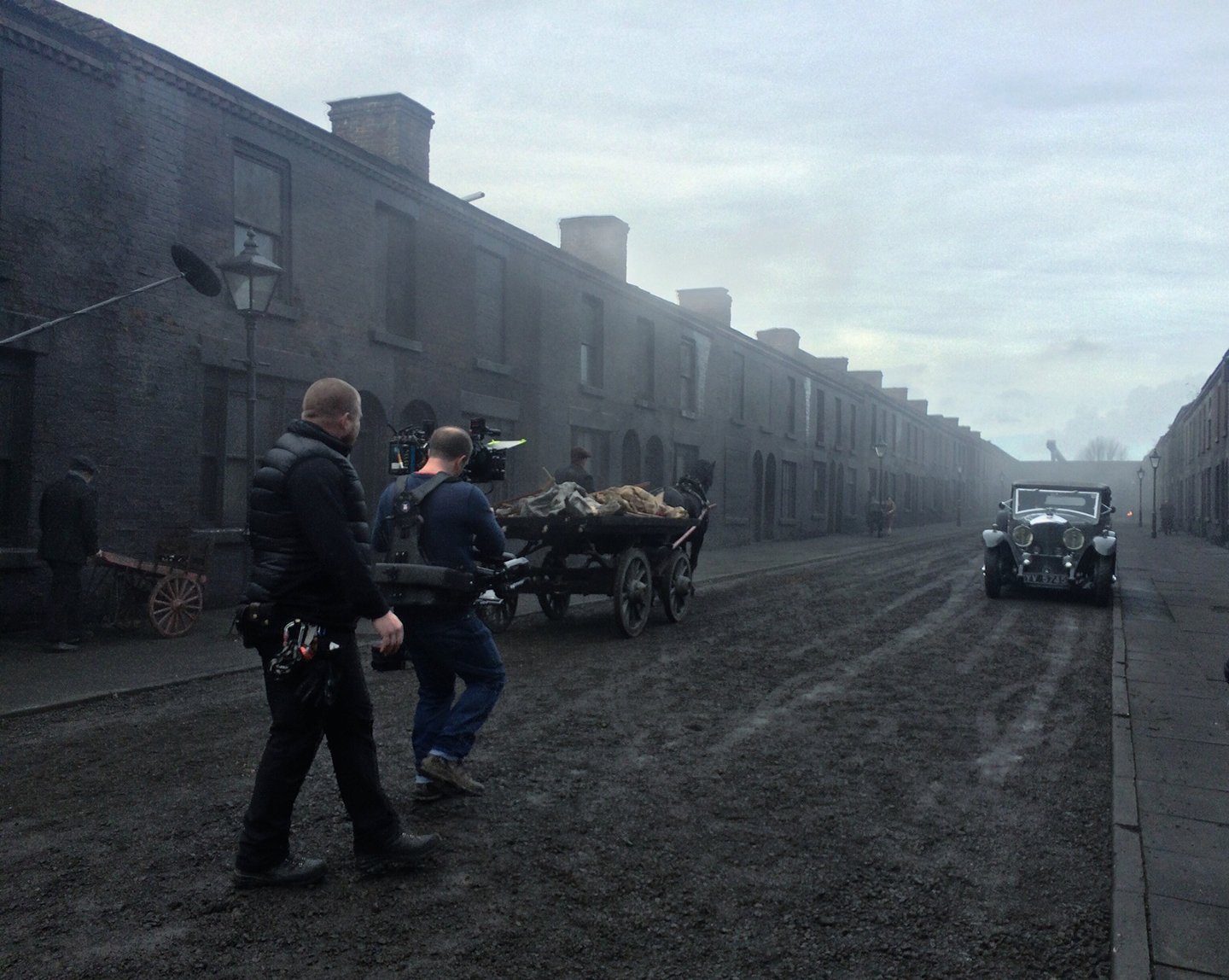
The show’s narrative, however, had changed with the changing circumstances of the Peaky Blinders gang. “They’d made a lot more money very quickly,” Rose says. “That gave us the opportunity to be grander and more glamorous, but always keeping that historic dark edge. We called them ‘Peaky’ shots; there was no limit to how Peaky you could make it. A backlight and darkness with lots of menace and threat.”
Rose worked with gaffer Phil Brookes on all six of his episodes. “Phil had a lot of wonderful period experience,” Rose notes. “Someone who’s worked on Downton Abbey undoubtedly has experience of scale, to work in a big world but to keep it very natural and period.” Rose operated A camera alongside focus puller Kim Vinegrad, while Chris Hutchinson operated Steadicam and B camera with focus puller Dan Gadd. As Rose relates, “Dan is almost the only crewmember who has worked on all four seasons of Peaky Blinders — principally on A camera; he agreed to do B and Steadicam 1st AC on Season 3.”
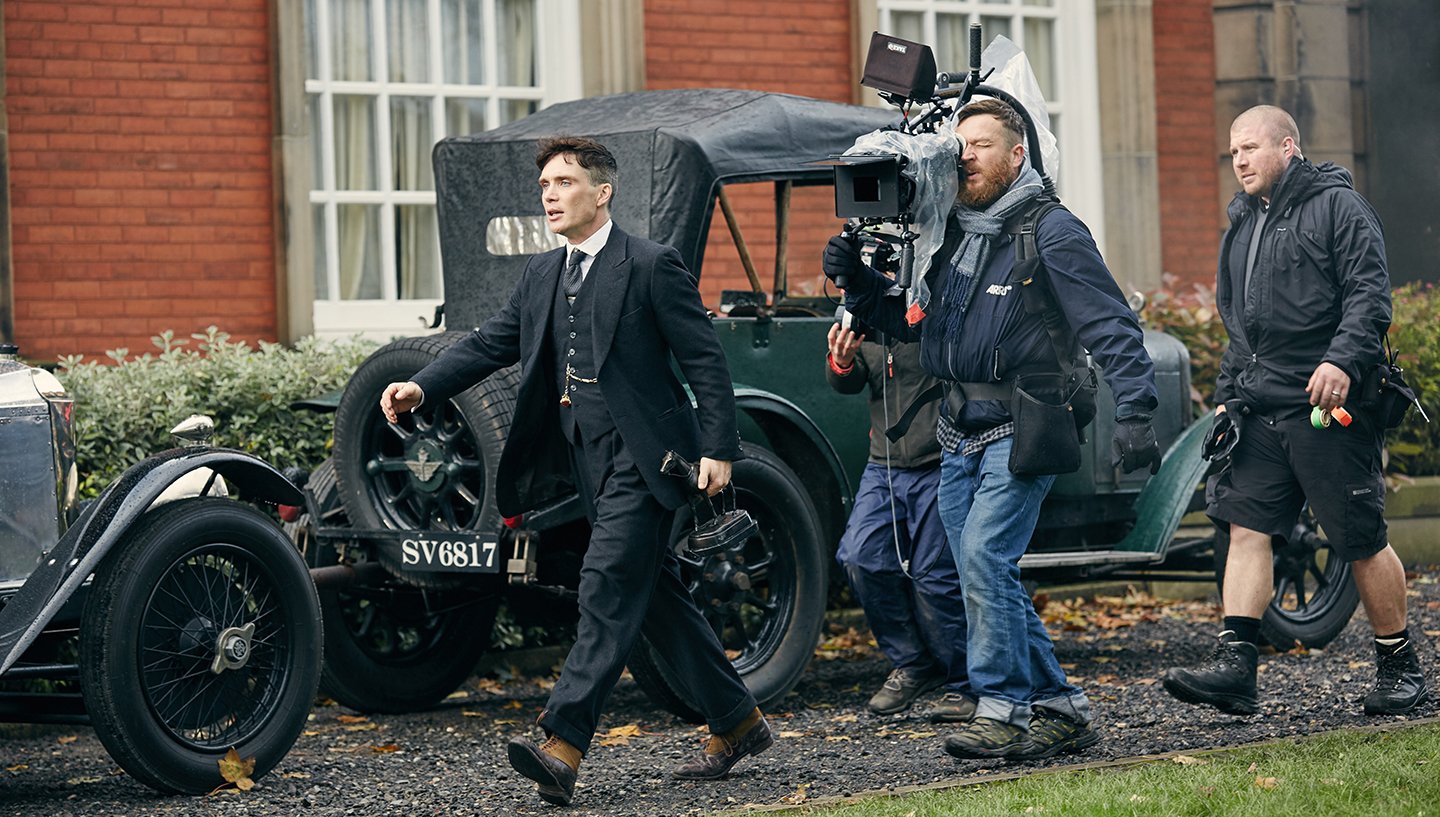
All four seasons have been shot on Arri Alexa cameras framing for the 1.78:1 aspect ratio. “With TV budgets,” Rose submits, “you can rarely shoot raw. For broadcast, ProRes is still plenty. I’m a huge fan of the Alexa — the sensor is bomb-proof and beautiful, and the file format is just as robust. I maintain that I haven’t used anything better.” Rose’s season was captured on Alexa Plus cameras, recording to ProRes 4:4:4:4 files at 25 fps for U.K. broadcast. Footage was captured in Log C to SxS cards.
Though Steel and Dennis had used Panavision Primo lenses, Rose reports that he chose a slightly different route. “I didn’t know Primos at the time,” he says. “I tested some things and changed it to be more like my normal package.” The cinematographer thus paired the Alexas with Zeiss Super Speeds. “Mark IIs and IIIs,” Rose specifies, “combined with an Arri/Fujinon Alura 45-250mm [T2.6] — a good match together.”
Rose relates that he used minimal filtering, employing a 1⁄8 Schneider Black Frost “worn as a rule, just to take the edge off — unless flaring ever became an issue with naked flame or sources in shot. Ambient smoke was the ultimate diffusion.”
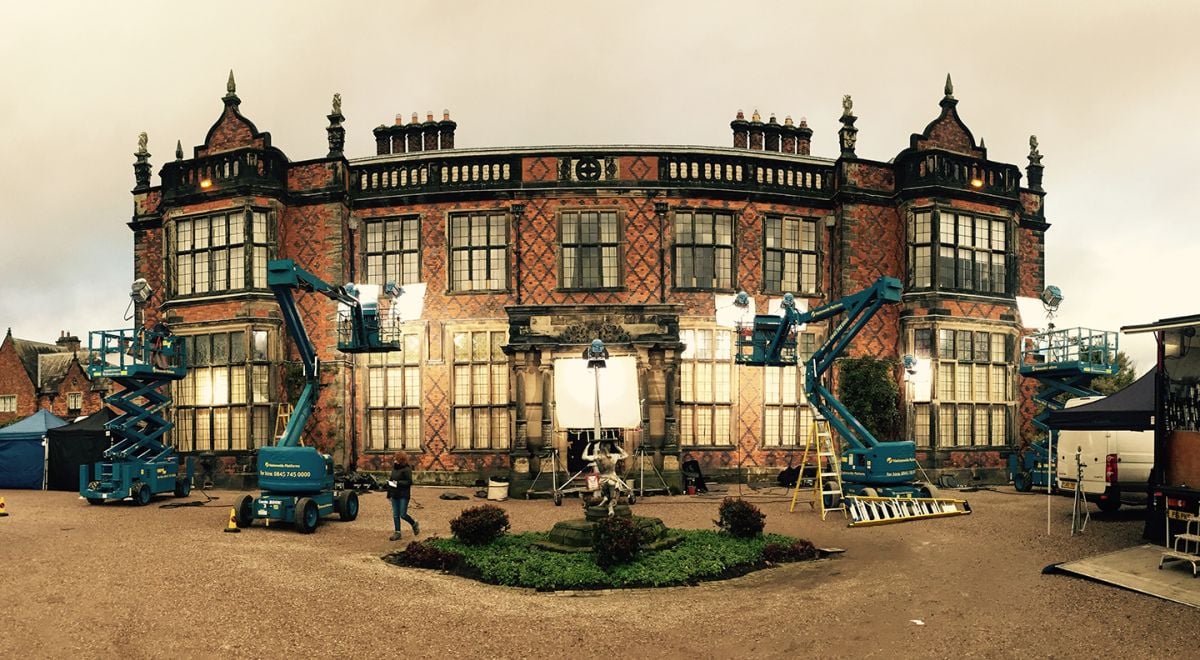
Another key accessory he “was given the opportunity to test,” Rose says, was the Tiffen Multi Rota Tray. This specialty rotating filter tray consists of a custom ultra-thin 138mm circular polarizer mounted in front of an additional removable 4x5.65 ultra-thin fixed circular polarizer. With both polarizers employed and the rear filter oriented forward, rotating the front 138mm filter creates a variable ND effect. When the rear 4x5.65 is flipped, it turns the combination into a warming/cooling filter, but still with a minimum of 2-stops of light loss. With this device, when stop pulls were performed — such as in the second episode during a long Steadicam scene of a servant moving across an enormous garden and entering a relatively dark interior — the Multi Rota allowed for unchanging depth of field.
“It was so good that I petitioned to get one for my B camera,” Rose enthuses. “There are a couple of minor optical issues with vignetting, but that’s one percent of it. [The rest] of it is just speed. It becomes less about thinking, ‘Oh, the sun’s come out, so we’ll have to stack the ND.’ It’s about, ‘I want to shoot this all at 2.8 so I can simply spin the ND in.’” The 2-stop loss of a two-polarizer setup was offset by the Alexa’s 800-ISO sensitivity. “Sometimes you don’t need all of those [spare stops], but at 800 you tend to have them.”
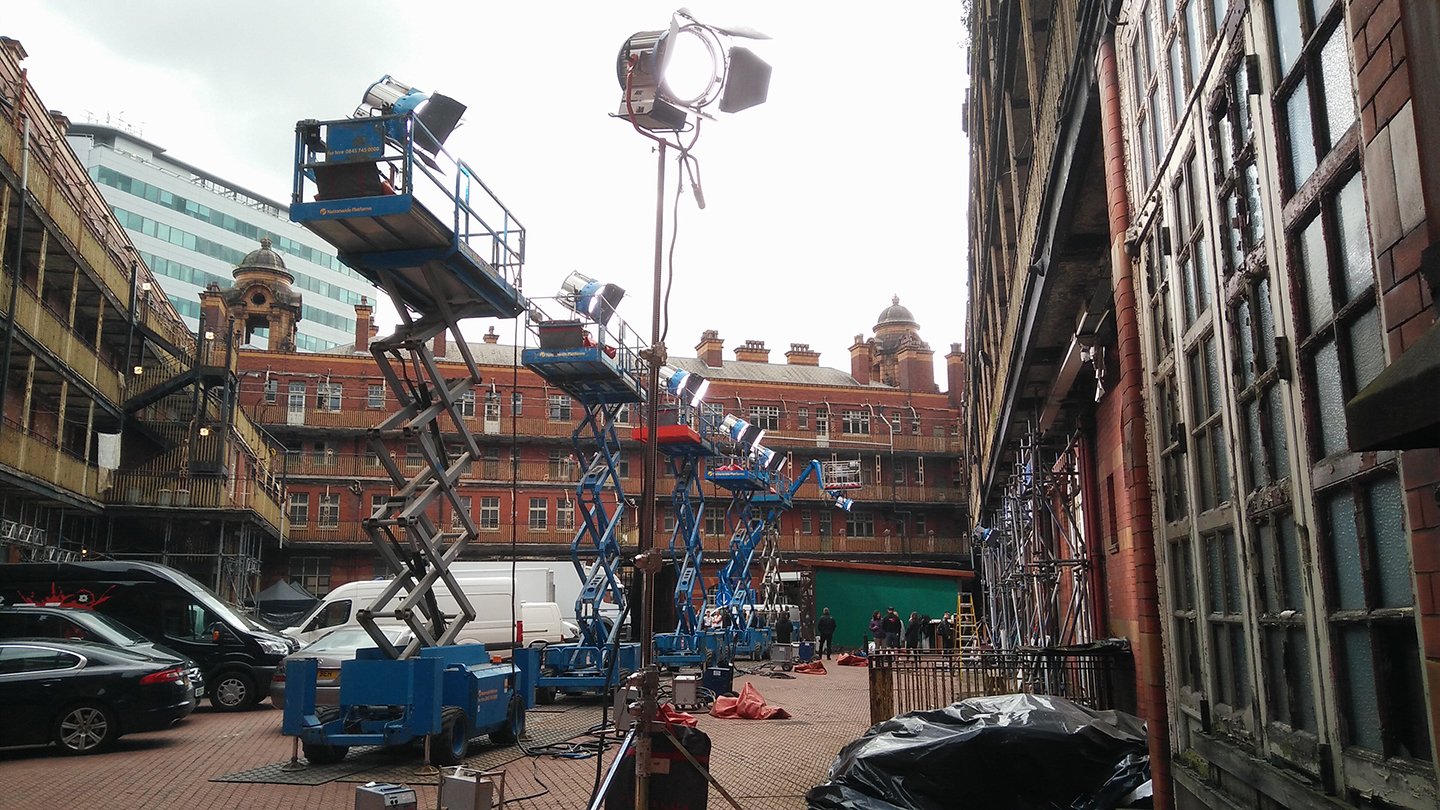
Peaky Blinders is largely shot some distance away from its purported Birmingham location. The second episode of Season 3, for example, depicts “a big charity gala, shot at St George’s Hall in Liverpool,” Rose says. “It’s a massive, historic venue — very glamorous, but a big area to light with contrast and shape. The scale-to-budget ratio meant it was quite broadly lit. The house lights were beautiful but very flat, so I used larger tungsten units along one side to lift the ambient, and then rows of Par cans tucked away for Peaky backlights, combined with rows of period floor-standing crystal electric chandeliers, and then framed fill on closer shots. The scale was daunting on a budget, and [it was shot] where nothing can be rigged in the historic property — a common factor when you’re working on period locations — but I was really happy with it. That combination was always key, to make it look beautiful but keep it Peaky. Sometimes I might drift into a more British-period-drama feel — and I’d think, ‘Is this Peaky enough?’”
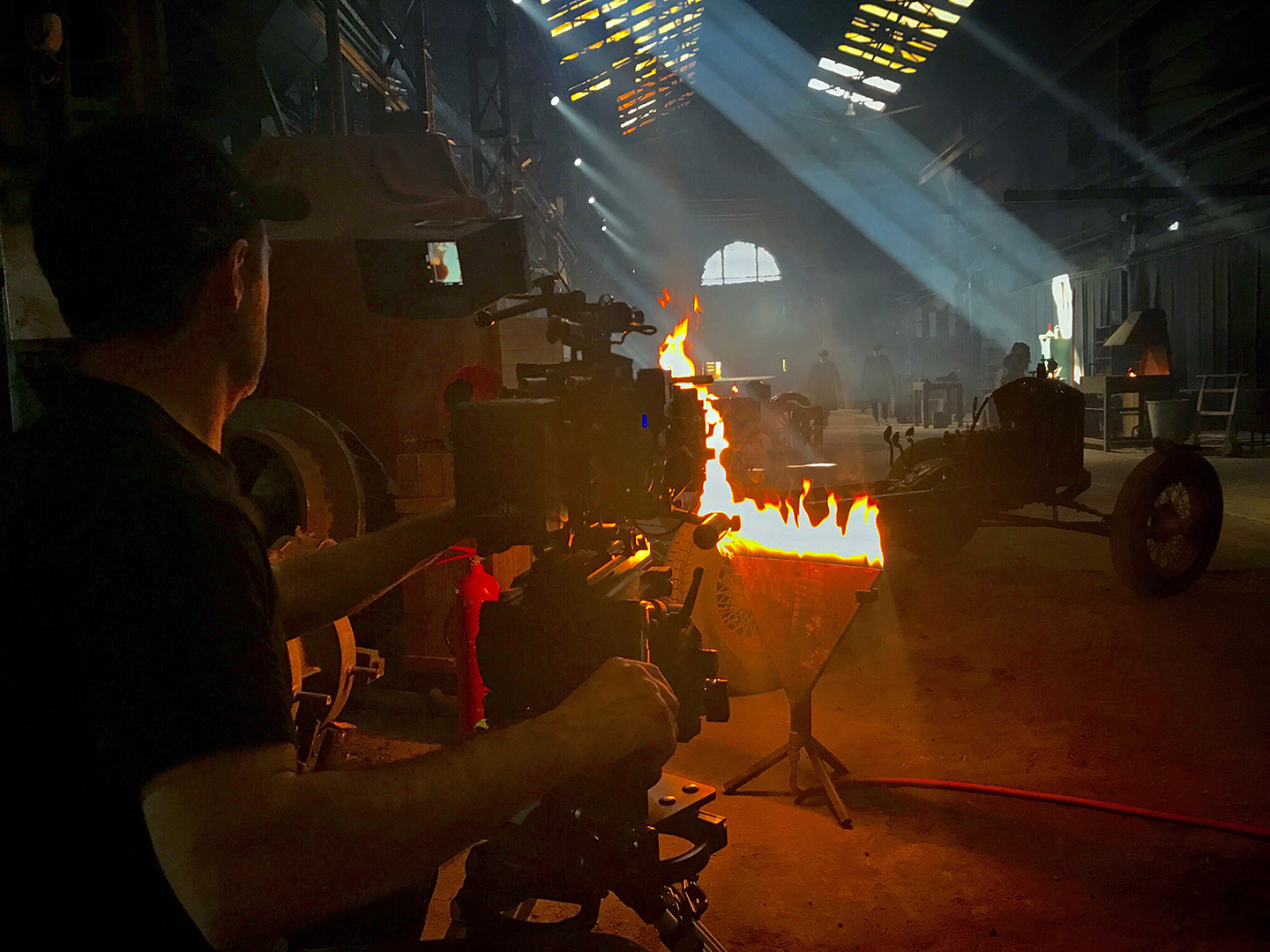
a warehouse interior in Season 4.
Period-appropriate lighting balanced early electric light with “more organic sources of light — candles, open fire, oil lamps — which can effectively sell a period feel,” Rose explains. Though the lead characters, due to their increasing wealth, might have had electricity, Rose retained a low-color-temperature feel to suggest early technology.
One memorable scene takes place in an underground vault, where Hardy’s character negotiates a jewelry deal. Rose details his collaboration with production designer Richard Bullock on a particular shot that featured a vintage inspection lamp. “We came up with a plan to use the inspection lamp, and he sourced one that was period appropriate,” the cinematographer relates. “It was an idea fully lifted from Blue Velvet that I also used in [the BBC miniseries] London Spy. [Richard would] always try to shield the bulb directly from camera by keeping the flagged side to me. It was really effective and intensely personal. Apart from some loosely strung festoon and a centrally hanging metal shade, the inspection lamp did all the hard work. Richard and I worked closely together a lot.”
Alongside Hutchinson’s Steadi-cam, Rose used a 21' ride-on Giraffe crane under the supervision of key grip Chris Hughes. “There were two reasons for that,” Rose notes with enthusiasm about the now-unusual piece of equipment. “One practical reason was that it was cheaper [than a telescopic crane], and the other reason was that I love that idea. I did ride-on, and we did a number of Steadicam step-offs. It wasn’t a huge arm, but people kept saying that nobody does that anymore.”
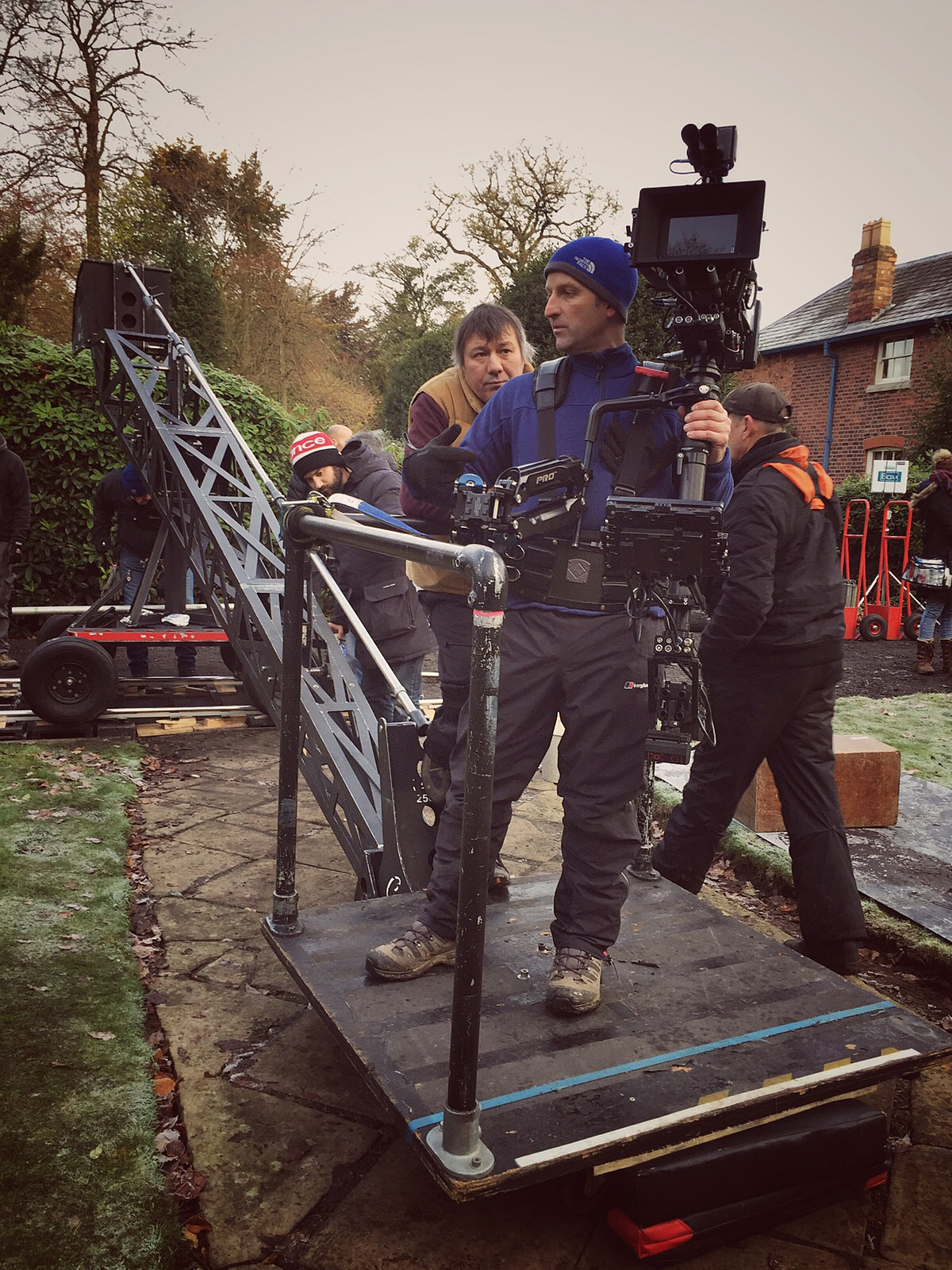
Colorist Simone Grattarola at Time Based Arts has performed the final grade on all of Peaky Blinders to date, providing a very welcome thread of continuity. Media is supplied from the edit fully uncompressed as a DPX sequence and is graded in Blackmagic Design’s DaVinci Resolve, which is also used to communicate with the director of photography on set. Each episode was allocated a three-day grade, with Rose supervising, and the producers were “very happy for that to happen. With someone who’s got a legacy on the show, you can go in and do some early notes and a run-through, and then you can leave them to get on with it,” says Rose.
“Often, the problem with any grading is availability,” Rose continues. “I was working almost immediately [after Peaky Blinders], and I had to rush off to the grade while I was in prep or even while I was shooting.”
Grattarola and Rose referred to Autochrome photographs, an early color process available during the period in which Peaky Blinders takes place. “They’re desaturated in all but RGB,” the cinematographer says, “so the primary reds, greens and blues remain strong. Everything else has a slight sepia tint to it; the focus is very shallow — just beautiful, dreamlike images of an early color process. They’re very charming.”
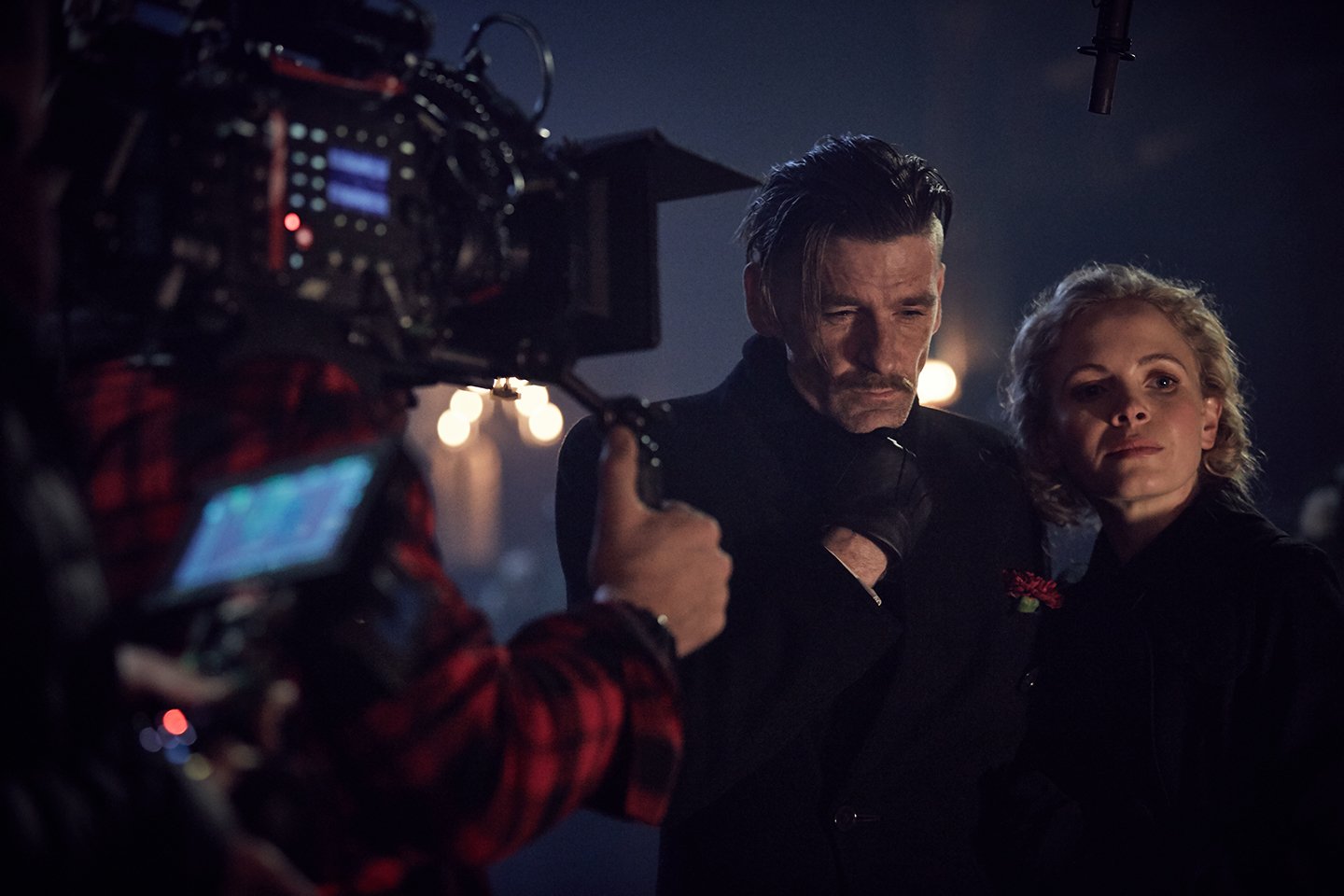
Colors, Grattarola points out, “create an emotional response. For the first [season], our references were deeply rooted in classic Western films like McCabe & Mrs. Miller and Heaven’s Gate [both shot by Vilmos Zsigmond, ASC, HSC]. The good thing is that the story still inhabits some of the old world, so that look stays. As Season 3 develops, you start to get more of an insight into the mind of Tommy — his inner workings, his loss, sadness, and a sense of fear.” Grattarola used an unusual approach to simulate a hand-tinted image in “the wedding scene and the fair later in the series,” the colorist notes. “I had to find a way to re-create [the Autochromes], so I turned the image black-and-white, and — using a color qualifier — picked out the original colors. Instead of dialing the saturation back in, I used them solely as qualifiers and washed my own color back into their qualified areas. This created a hand-tinted feel.”
“When they did a preview of the first episode before it was broadcast, Stephen Knight said that Peaky Blinders can be seen like any good cowboy film,” the cinematographer recalls. “It’s writing your own legends, and that’s sort of what cowboy films have always done.” Having since completed the Laurel and Hardy biopic Stan and Ollie, Rose anticipates more work with Mielants. “He’s written a script about a nudist camp, and it’s very funny,” Rose says. “It’s European-funny, but there’s a plan — stylized and dark. I’d do anything with Tim because he comes at things at an interesting angle, and I’m always up for that.”
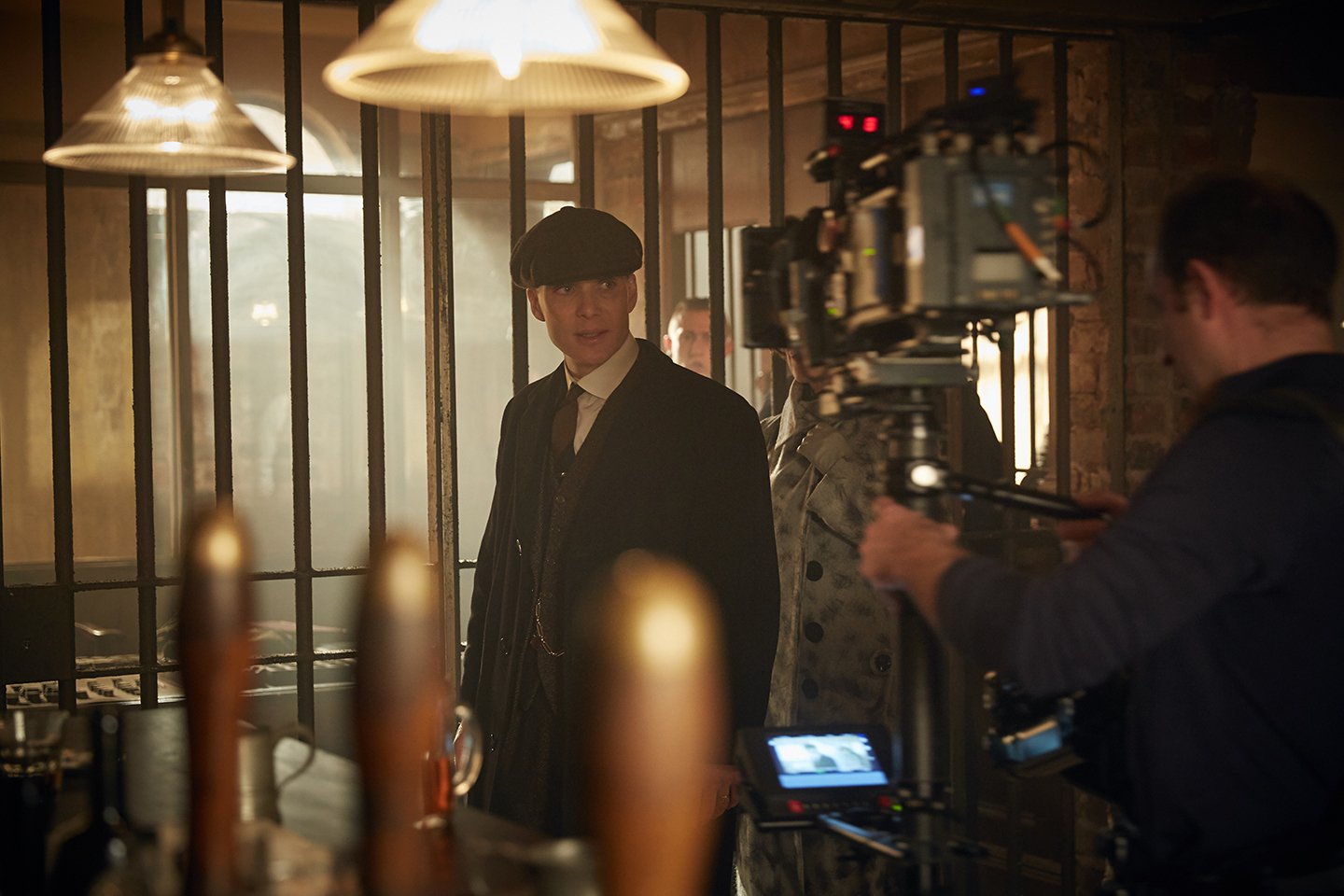
Principal photography for the fourth season of Peaky Blinders is approaching completion at the time of this writing, and Cathal Watters, ISC spoke with AC during week 13 of a 15-week shoot.
“You’re being handed over a mantle,” he begins. “The producers were saying, ‘Make it your own, do your own thing,’ but I knew that it still had to be Peaky Blinders. Hopefully, some of my work style will come out inherently by the decisions I make. That was very important for me because I think Peaky Blinders is so visual.”
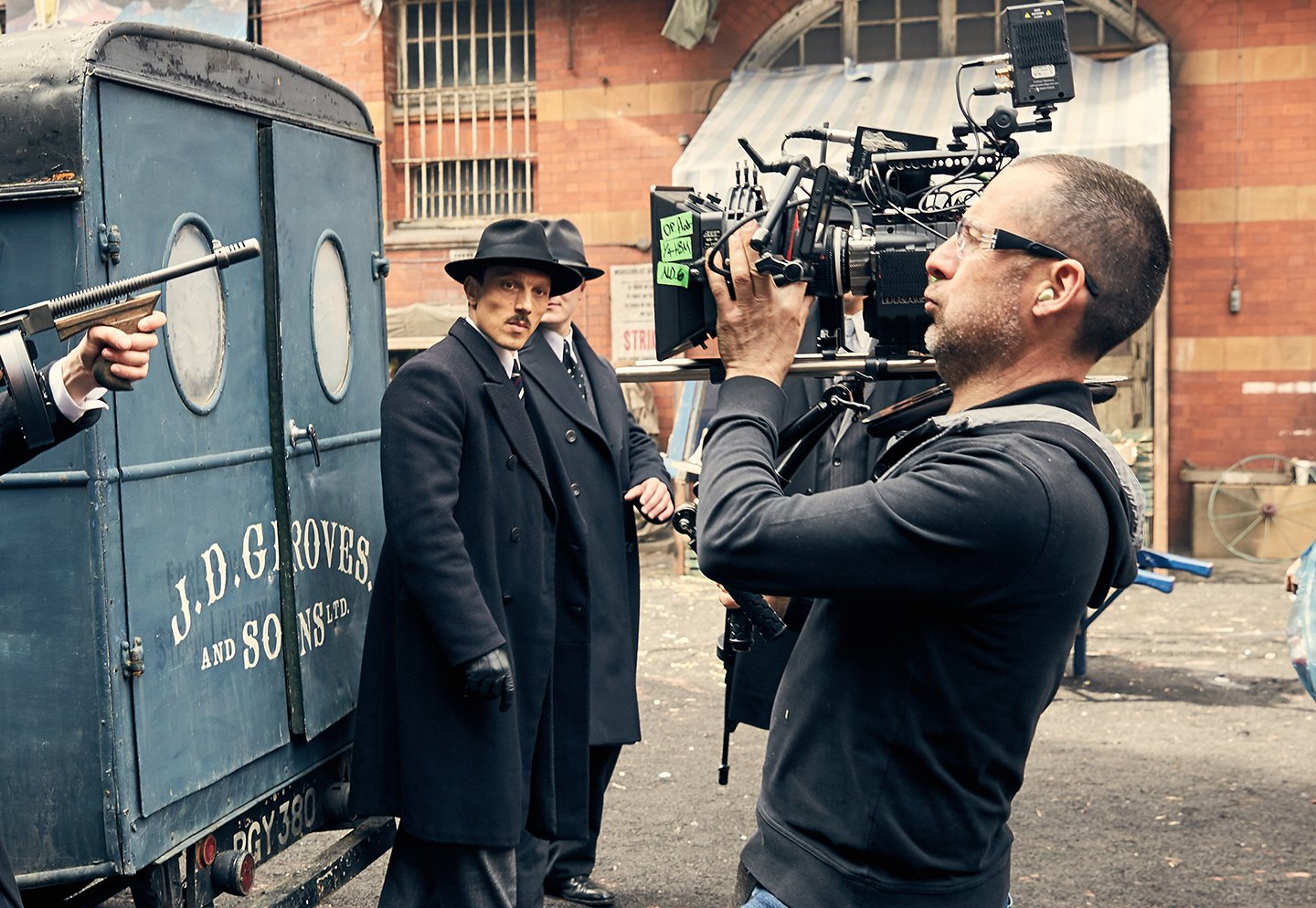
Watters grew up amid the smell of chemicals from his press-photographer brother’s home laboratory. “With my first job,” he notes, “I bought a camera. I’ve developed my own photos for a long time. I went to Trinity College in Dublin and did a degree in drama and the Irish language. As soon as I finished the degree, I started looking for news-camera positions. I went out shooting news. I didn’t want to go into drama straight away; I wanted to start shooting — to have a camera in my hands.
“There’s a small station here in Ireland — TG4,” Watters continues. “I started shooting for them in 1997. They wouldn’t give me a job on the camera at first; I started [as an editor].” These opportunities built into an enviable camera career in documentary and current affairs, including work as far afield as New Zealand, Iceland, the U.S. and Rwanda. Since then, Watters has worked on both the big and small screen, with his first feature, Vivienne de Courcy’s Dare to Be Wild, released in 2015. Recent highlights include Paddy Breathnach’s 2015 film Viva, which earned Watters the Irish Film and Television Academy’s award for best cinematography, and the television series An Klondike (Irish for “The Klondike,” known as Dominion Creek in the U.S.).
“If people asked me last year, ‘What TV show would you like to shoot?’ it would be Peaky Blinders,” Watters cheerfully states. “I’d worked with [Peaky Blinders Season 4 director] David Caffrey on a series, Love/Hate — he directed five seasons of it. I’d say it was the biggest drama show ever produced in Ireland. I did second camera for the final season.”
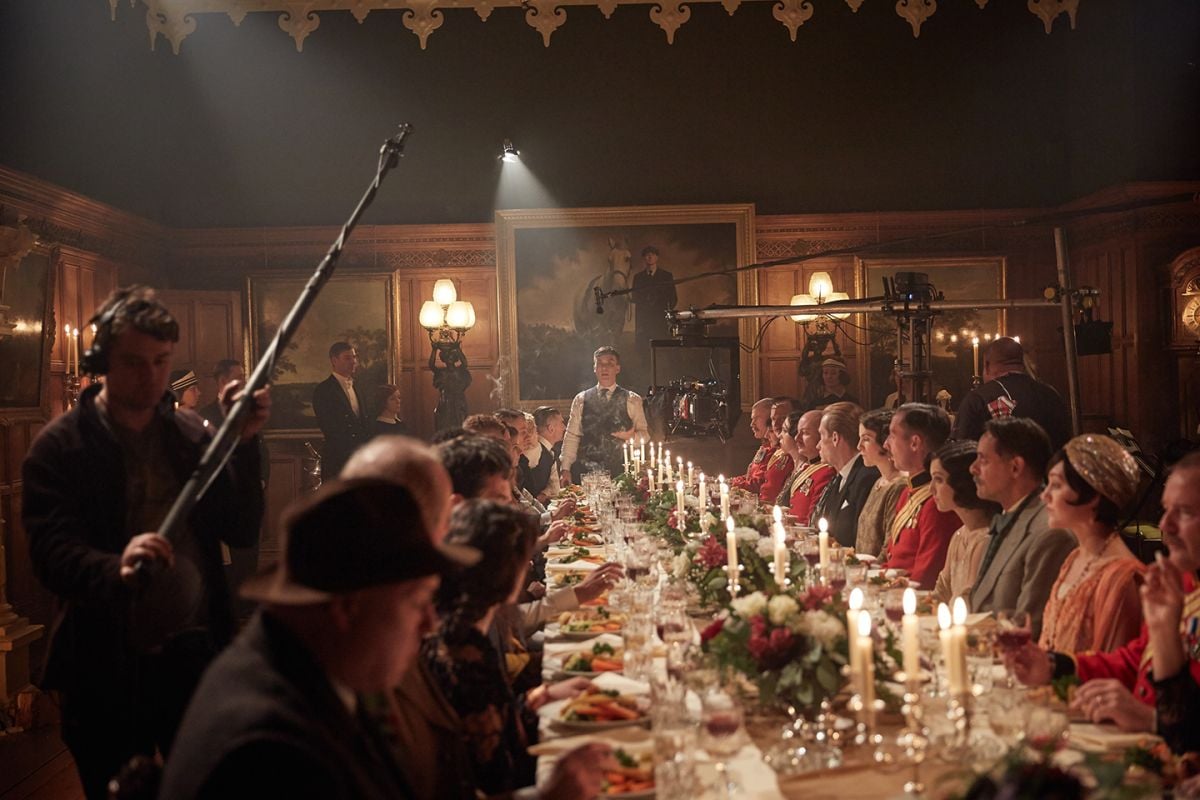
Peaky Blinders’ six-hour Season 4 called for a 75-day shoot with two Alexa Minis — cameras preferred for their compact dimensions, whose size was further minimized by a 15mm rod setup suggested by Gadd, who is serving as A-camera first assistant this season. The Minis record ProRes 4:4:4:4 to CF cards, and often shoot up to 200 fps. “So much of it is shot at high frame rate, to give us the option in post to ramp it or make it look cool,” Watters notes. Red's Epic Dragon was also used for some shots, including crowd-replication plates.
An unconventional lens choice was suggested by Caffrey, who had just finished an anamorphic production. “He was interested in shooting anamorphic and cropping to 16:9,” Watters recalls, “so I tested anamorphic. I’ve shot music videos in that format — I loved it and I think [the lenses are] great.
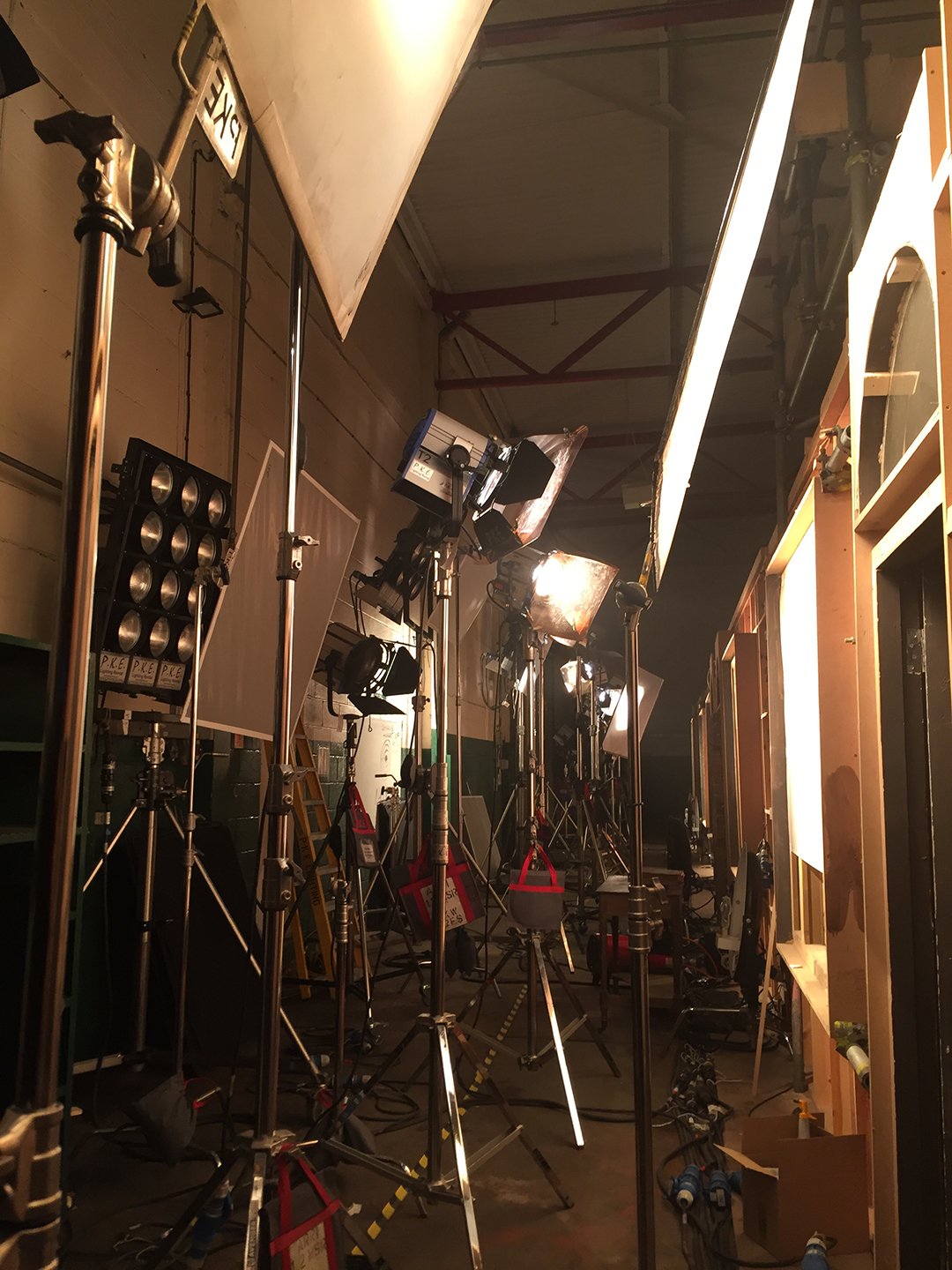
“We were looking at anamorphics and diopters,” Watters continues, though practicalities intervened. “I love Super Speeds and the softness they give, and we tested them and I showed them to David. I didn’t want to be the one to not give him what he wanted, but he saw it himself. We both said, ‘Let’s go with Super Speeds.’” The core set of Super Speed Mark IIs and IIIs included 18mm, 25mm, 35mm, 50mm, 65mm and 85mm lenses. These were augmented with an Angenieux Optimo 24-290mm (T2.8) zoom, as well as a 14mm, 100mm and 135mm Zeiss Standard Speed.
“I do a lot of top shots,” says Watters, in reference to the 14mm. The zoom, on the other hand, is a choice targeting speed and efficiency. “When it’s time to ‘hoover up,’ you put on the Optimo,” he submits.
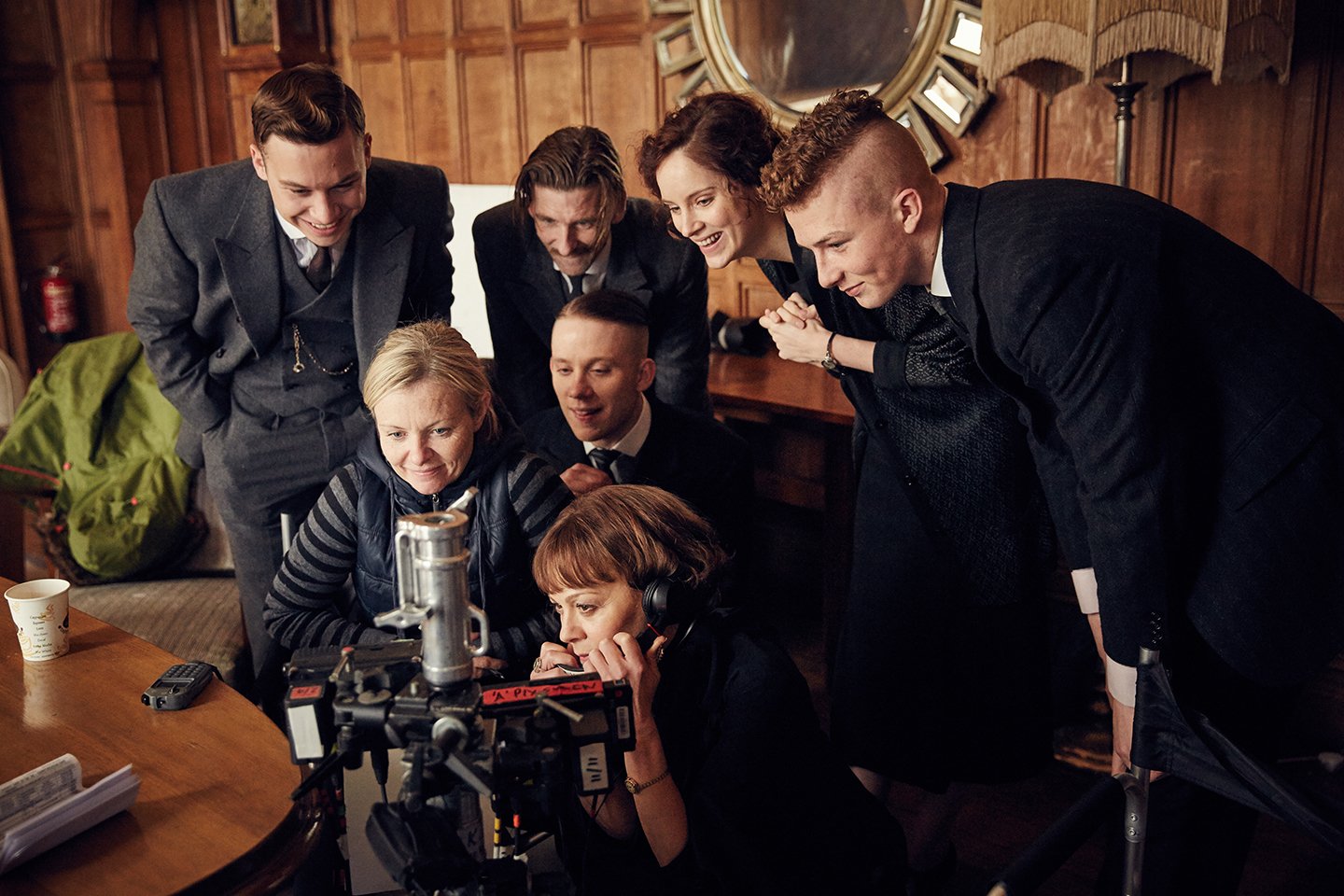
Watters’ preferred combination of lenses and filtration is perhaps counterintuitive. “I don’t like putting filtration in front of the Optimo, but I do on the Super Speeds, which is bizarre because the Super Speeds are so soft anyway,” he says. The reason for this, he explains, is that “I only use the Optimo from 150mm upwards, as I prefer to use the primes up to 135mm to keep the look consistent. To my mind, the softening filters are too strong on the Optimo from 150mm upwards; the image is too condensed.”
Thus, between 18mm and 50mm, Watters prefers the 1⁄2 Schneider Hollywood Black Magic filter, with the 1⁄4 Black Magic above that focal length. In scenes depicting light sources such as candles, various grades of Tiffen Black Satin filter are used to similar effect, minimizing blooming.
Watters takes personal control of iris pulls on Steadicam, with A-camera using the Arri WCU-4 for remote focus, and B-camera relying on Preston equipment. “The director has two 9-inch monitors, and Phil [Brookes] and myself have a 17-inch TVLogic,” he says, “and I have a histogram [to assist in] pulling the iris on Steadicam. Every day that the camera is on Steadicam, I’m handed the iris control.
“I operated the A camera, while Chris Hutchinson was on B camera and also Steadicam,” Watters adds. “He’s excellent on Steadicam.”

While Peaky Blinders doesn’t extensively shoot handheld, flexibility was key. “Cillian won’t do anything unless it’s true to his character,” Watters notes. “Cillian would not go somewhere for the sake of light if he felt his character, Tommy Shelby, wouldn’t stand there. I would have to work around that, and in the end we would end up with something much truer to the story rather than something manufactured. That clicked with me — never force that.”
He continues, “In some instances, where I wanted the camerawork to have a very organic feel, I would use the camera handheld without [blocking] the action that much. I was happy to react to the actor, and in so [doing], the feel of the movement is very reactionary. It’s difficult to plan or manufacture that feel. This is when I would say, ‘Let’s do a dance here!’ I think years of documentary work enable me to react to what is happening in front of me. I also think an actor responds to a camera being so close to them. One of my favorite scenes is where Cillian is drunk and we did a ‘dance’ that we are both very proud of. Most of the handheld is on a 35mm lens — allowing close focus, but also a good aesthetic, up close. I don’t want to know what the actor’s going to do — so let’s do a dance here. Audiences are so savvy that you can do whatever you like. I mix up Steadicam with handheld and jib moves.”
Grip Dan Inman has supervised the use of a Grip Factory GF-9 crane — which was used for the wide-angle overheads — along with sliders from both Grip Factory and Ronford-Baker. A Ronford-Baker Fluid 7 head is particularly valued for its ability to undersling the camera.
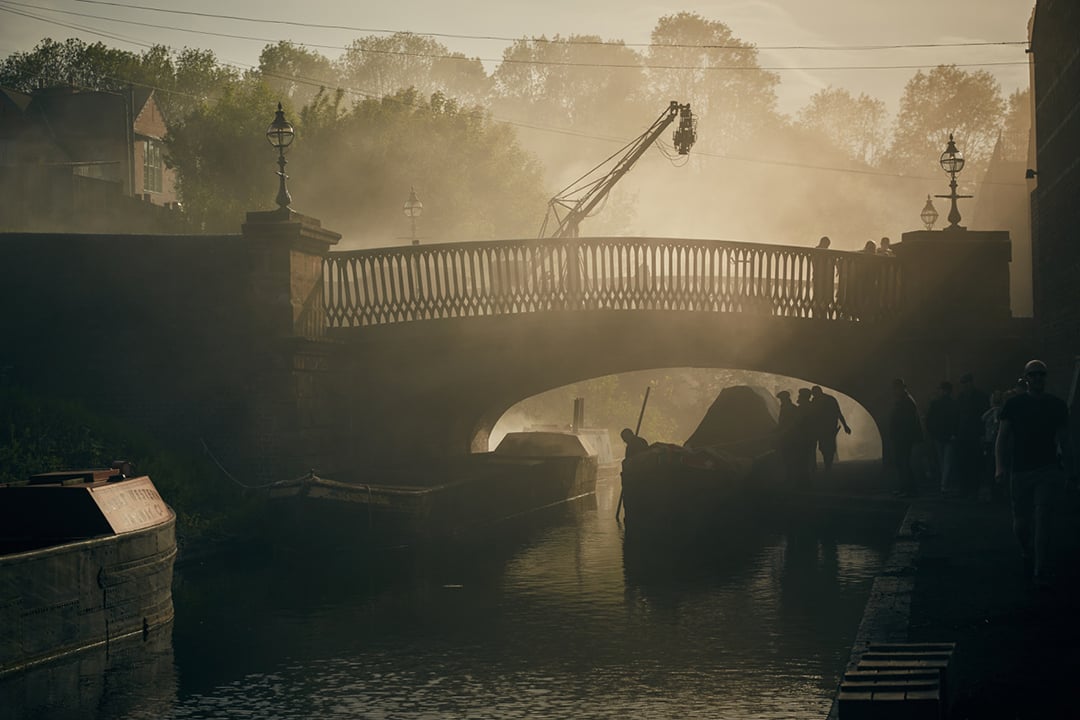
A period setting makes production design even more crucial, and Watters is quick to credit the work of production designer Stephen Daly, with whom he and Caffrey worked on Love/Hate. “The interior sets from last year are just stunning — so good to light,” Watters enthuses. “I think I’ve approached them in a slightly different way; I tried to make it a little grittier. The new sets that Stephen designed were equally good to light. In designing them, he was very mindful of the lighting.”
Watters further notes that careful preparation and remotely controlled lighting saved time. “The tungsten is all dimmable,” he says. “It’s all [controlled] from [Brookes’] phone — it just works and it’s so quick. We just did a massive rig last week over a boxing ring. That was all dimmable and movable, up and down.
“I think Peaky Blinders managed to have period drama shot in quite a very modern way.”
— Cathal Watters, ISC
“Before tech recces, Phil and I visited each location and planned what we might do,” he continues. “We also chose a lot of the colors I used. Phil was very thorough in his preparation. [We essentially] had it lit between ourselves, before the tech recces.”
While Watters generally lit interiors with tungsten, one particularly “upscale” day-exterior — budget-wise — involved five 18K HMI Fresnels. Such an array was “certainly our biggest lighting setup,” Watters reports. Kino Flo Celeb 201 and 401 LEDs, valued for their variable color temperature and the 201s’ battery power, are used for smaller locations. And, as Watters says, “we’ve kind of embraced [Arri] SkyPanels. I hadn’t used them that much before, just on occasion for commercials, but they’ve been so useful.”
The SkyPanel S60-C was selected for its ability to produce powerful colors on demand. “Peaky Blinders is a Western,” he opines. “It’s film noir, it’s superhero, it’s all of the above. I wanted to introduce different [aspects] of color.” Various other features of the SkyPanels were also used, including the paparazzi strobe effect, all controlled via DMX from a lighting desk operated by Brookes.
Watters discussed lookup tables with Grattarola, and concluded that the high-contrast look of the show wouldn’t be helpful as a general monitoring LUT. “You can’t say that this LUT is good for [both] exteriors and interiors,” Watters says, “so we basically made 5-, 10-, 15-, 20- and 30-percent of that grade. For some interiors, I just use the classic Alexa look. We call them PB5, PB10, PB15, PB20 and PB30. Every morning we’d say it’s a PB5 shot, and if it’s a day exterior I might go to a PB15.” While digital-imaging technician Doug Garside has produced iPad-viewable previews, time hasn’t generally allowed Watters to do much on-set grading. “It was very naive of me to think I should have been able to do it on this show. [Garside is] grading the rushes and bringing them in to the iPad on set. I’ve been in his van six times.”
Grattarola has so far addressed “probably five minutes of selects from the initial week’s shoot,” the colorist says, “You could say that the cinematographers on the series each have their own thread — or interpretation — in method and vision, and that gets woven into the fabric of Peaky. You don’t want to intrinsically change what people have been drawn to, but at the same time it needs to grow. You want to do this artistically, and keep pushing yourself. It’s a bit of an exploration process, which is healthy. You’re driven by the narrative and that emotional response — really thinking about how you should be feeling at any point in the story. Tim [Mielants] was always asking us, ‘How do we feel?’”
“I think Peaky Blinders managed to have period drama shot in quite a very modern way,” Watters concludes. “I’m talking about Season 1 — very stylized, very deliberate. It doesn’t take you out of the idea that you’re in the 1920s. To do that on the first season, to create a context where you could do anything in a period drama, is brilliant. It’s very freeing in that you don’t think it’s Pride and Prejudice, very solid and rigid. We have a mantra: ‘Is that Peaky? Are we in the Peakys’ world?’ For a show to have its own particular look is testament to the previous cinematographers.”
TECHNICAL SPECS
Aspect Ratio: 1.78:1
Arri Alexa Plus, Alexa Mini; Red Epic Dragon
Zeiss Super Speed, Standard Speed; Angenieux Optimo; Arri/Fujinon Alura
